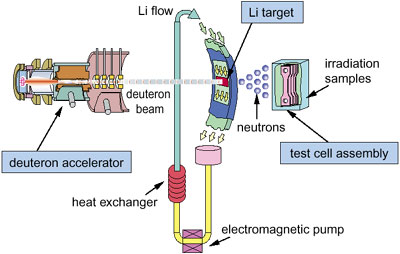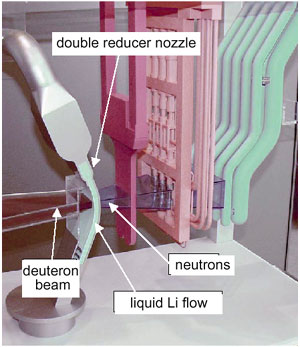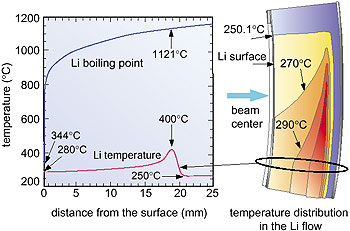For the development of a D-T fusion reactor, it is indispensable to develop the materials which will be proof against radiation damage by 14 MeV neutrons. So the elemental technology of the International Fusion Materials Irradiation Facility (IFMIF) is under development now. In IFMIF, the liquid lithium (Li) target irradiated with a deuteron beam (max. 40 MeV, 250 mA) generates 14 MeV neutrons (Fig. 3-17).
A heat load at the Li target by the deuteron beam irradiation reaches 1 GW/m2 so that the flow velocity of the Li target should be a maximum 20 m/s for heat removal. The Li flow thickness to the beam direction is about 25 mm. Measures for the stabilization of the Li free surface and for the prevention of boiling in the Li flow are indispensable.
In order to solve these problems, we developed a Li target system that has a double reducer nozzle and a concave back-wall to produce a pressure by centrifugal force in the Li flow and to stabilize its free surface (Fig. 3-18).
Under the condition of a centrifugal force field associated with an acceleration 1,600 m/s2 that is generated at the maximum velocity of the concave flow, the boiling point is about 1,100 degrees cent. at 0.2 atm. It was confirmed by the thermal-hydraulic analysis code that the maximum temperature in liquid Li was 400 degrees cent. and that boiling could be prevented even at the peak temperature point (Fig. 3-19). The stability of the high-speed liquid Li was corroborated by water flow simulation experiments and now, we are planning demonstration experiments by a liquid Li loop. |



